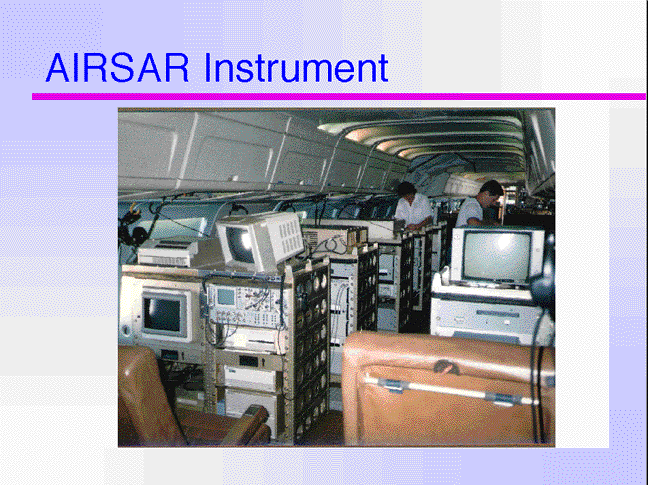

The AIRSAR operates in the following three modes: POLSAR mode, XTI (TOPSAR) mode and Along-track Interferometric (ATI) mode and is a left-looking radar simultaneously operating at three wavelengths: C-band (0.057 meter), L-band (0.25 meter), and P-band (0.68 meter).
POLSAR is fully polarimetric meaning that radar waves are transmitted and received in both horizontal and vertical polarization.
The AIRSAR can collect two kinds of cross track interferometry (XTI) data using two C-band and/or L-band antennas that are separated by a fixed distance on the aircraft. The single-baseline cross-track interferometric mode has only one antenna transmitting radar pulses. The dual-baseline cross-track interferometric mode has both antennas transmitting and receiving radar pulses.
In addition there are two antennas separated in the horizontal direction along the flight path used in the along-track interferometric(ATI) mode to detect ocean current movement.